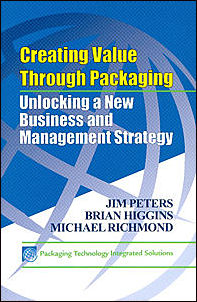How Do We Solve Sustainability Problems of Multi-Material Flexible Packaging?

Multi-material flexible packaging is a sustainability conundrum. Hailed for its light weight and convenience they are popular with consumers, and brands like them for their low cost, material efficiency, and carbon footprint, but all bemoan their lack of recyclability. Finding the solution to divert these packages from the landfill would significantly advance their sustainability story. There has been a number of initiatives in recent years to explore solutions, and advancements are slowly being made. Earlier this month the Sustainable Packaging Coalition released a new website (www.multi-materialflexiblerecovery.squarespace.com) cataloging global efforts toward recovery for this popular and growing packaging format. Designed to serve as a clearinghouse on all things related to the recovery of multi-material flexible packaging, this is the first compilation of global data and resources. I spoke with Associate Director Adam Gendell to discuss the initiative:
How did the idea to create this resource come about?
Adam: This website was driven by our members who were seeking ways to support the recovery of multi-material flexible packaging. In our discussions, there was an “ah-ha” moment when we realized there was a lot going on, but very few had the full perspective. By creating a centralized hub that provides information on projects and research, explains available technologies, and shares lessons learned, we felt we could advance the learning curve. Particularly, when we’re looking at global initiatives, having a centralized location to reference helps ensure shared learnings and advance collaboration. We want everyone involved in creating packaging to work with us and use our new web-based resource to identify best practices, make connections, build upon previous insights and identify gaps in our understanding.
Recovery is a process with a sequence of stages (i.e. package design, waste collection, sortation, reprocessing, end market use). Where in this process are the challenges for multi-material flexible packaging and where are the greatest opportunities?
Adam: Being so early in the pursuit of recovery solutions, we can identify challenges everywhere for this type of packaging. The very idea that we categorize multi-material flexible packaging as a solitary type of packaging is misleading. It’s a diverse array of different material structures, and that creates special challenges. Multi-material flexible packaging can be up to nine layers of different materials, including additives, adhesives, lacquers, inks, metallization, etc… A recovery system that works for one type of material might not work for the net combination of all the different materials in this family of packaging. We also use multi-material flexible packaging for many small applications (think candy wrappers), and small packages can be much harder to manage in recovery streams, which are mostly optimized for larger sizes (think bottles and boxes). This variety hugely impacts the considerations for recovery.
Most of recycling is predicated on the idea that different materials can be sorted from each other and processed independently, but today there are no technologies that can effectively sort and separate all the layers we can find in multi-material flexible packaging. There are technologies that offer the ability to work with blended resins, but they require a detailed understanding of the material composition, including all its different resins and barriers, which is really hard to obtain if looking at the jumble of film structures that would be found in postconsumer waste. We can find pursuits aimed at changing the package designs in order to reduce the jumble, and we can also find pursuits aimed at creating new recovery technologies that can handle the jumble. In order to create a widespread solution, work from both of these directions is needed.
Many of the projects providing promise for multi-material flexible packaging waste actually address a broader family of hard-to-handle plastics. Can you explain why that is?
Adam: In one key word: volume. Almost any type of recovery – be it recycling, waste-to-energy, or something new – requires a critical mass of material in order to be feasible. The very virtue of being lightweight means it’s going to be hard for flexible films to provide the critical mass necessary for its own recovery stream. The jumble of different materials makes this an even bigger issue. Many recycling technologies are best suited for specific types of plastic. If there was a way to identify and separate all the different plastics in multi-material flexible packaging – and there’s not – the individual material streams would be even smaller than the sum of their parts.
The lack of recyclability has been an issue for many circular economy advocates who argue that replacing existing packaging formats with this format is a step backward. How important has design for recovery been in the projects tackled and what role do you think it will play in the future?
Adam: Packaging operates within a system, recovery is only one stage of its lifecycle so we need to keep in mind that when we talk about design for recovery. Multi-material flexible packaging has provided tremendous benefit in reducing carbon profiles, creating material efficiency, and reducing cumulative resource use. From a lifecycle perspective, a lack of recovery options is its only major disadvantage.
All of the projects profiled on the website are based on design for recovery, they’re just operating from the premise that they need to improve the whole system, not just the package. In traditional “design for recovery” thinking, one needs to know what the current recovery system is and design the package to fit in that system. The push for multi-material flexible packaging recovery requires some degree of designing a recovery system to fit the available packaging material. For success, the design of the package and design of the recovery system will need to meet in the middle.
Is there a comprehensive story to tell yet regarding recovery?
Adam: There’s a blueprint that has been laid out by other types of packaging. When a new type of packaging gains momentum, potential technological solutions for recovery are identified, investments are made to scale up those solutions, and end markets are identified or created to pull the material through the system. Once this is established, community and consumer engagement can raise awareness and get the material into the public collection system. The search continues for the most financially viable solutions but the level of industry collaboration and funding dedicated to this is encouraging. Companies involved with multi-material flexible packaging want to see it succeed as a packaging format and they recognize that finding solutions to drive recovery is a necessary next step. We’re not there yet, but I’m hopeful that continued efforts to share resources and build upon progress will find those solutions.
Looking for a reprint of this article?
From high-res PDFs to custom plaques, order your copy today!






